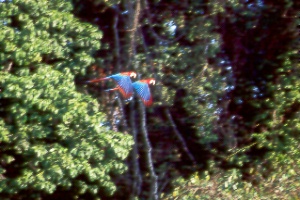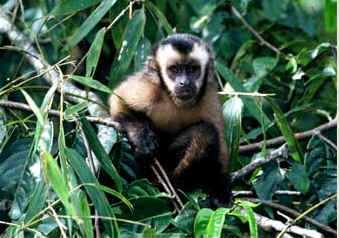

Destinations
Experiences
 |
L A
D A T C O T O U R
S |
 |
||||||||
| HOME | South America | Falkland Islands | Antarctica | Unique Destinations |
Unique Experiences |
Newsstand | ||||
 |
PERUVIAN
RAINFOREST MANU
|
 |
||||||
The Manu Biosphere Reserve covers an area of 2,233,693 hectares (1 hectares = 2.471 acres or more than 5 and 1/2 million acres!) and is one of the earth's largest conservation units. It encompasses the entire drainage area of the Manu River.
In the words of Walter H Wust in his "Manu, the Last Refuge": Manu sprawls over the southeastern corner of Peru, running from the edge of the cold altiplano above the tree line, dropping 3,500 meters across the slopes of the Andes and spreading into the Amazonian lowlands. It is now officially designated as Manu Biosphere Reserve, a protected area that encompasses 1.8 million hectares. The great area harbors more than 1,000 bird species, 2,000 kinds of plant and over 200 types of mammals, including 13 species of monkey. Manu is probably the most biologically diverse preserve on earth, and much of the park is still terra incognita.
There is no doubt: it is vast, it is bio-diverse and it is one of the most rewarding experiences available in the delicately rich rainforest. At 1,000 species of birds, Manu has one out of every nine on earth, and 200 more than the entire USA.
The Manu Biosphere Reserve is comprised of the National Park, into which only scientists and researchers with proper permission from the Ministry of Agriculture are allowed; the Cultural or Reserved Zone, set aside for eco-tourism and applied scientific research, and the Multiple Use Zone for native groups and colonists, and the Nahua-Kugapakori Reserved Zone, set aside for two nomadic native groups to carry on their traditional way of life.
To visit Manu means to visit the Cultural or Reserved Zone - that part that has been preserved for tourism, and which tourism is helping to preserve by virtue of generating interest and income for the area. Manu Wildlife Center is one of the newer lodges, well positioned to take full advantage of the bio-diversity wildlife viewing.
What you can see:
|
|
| Rainfall: | Av Temperature | Av High | Av Low |
| 2500-3500 mm a year (x .03937 = 98-138 in) |
82 F | 93 F | 72 F |